#human resource management system
Explore tagged Tumblr posts
Text
Why Every Growing Business Needs HRMS Software India?
Introduction
As businesses expand, managing HR processes manually becomes a challenge. Payroll errors, compliance issues, and inefficient employee management can slow down growth. This is where HRMS Software in India comes into play. It automates key HR functions, reduces administrative workload, and ensures regulatory compliance. From payroll processing to employee attendance tracking, an efficient HRMS software helps businesses optimize their workforce and focus on strategic goals.

The Growing Need for HRMS Software in India
A structured HR management system is crucial for businesses operating in a competitive environment. With evolving labor laws, remote work trends, and the demand for employee-centric policies, businesses need an integrated solution to handle HR functions effectively. The adoption of human resource management software has become essential to ensure accuracy, efficiency, and compliance in HR operations.
Key Benefits of HRMS Software for Growing Businesses
1. Efficient HR Process Automation
Automates essential HR tasks like payroll processing, leave tracking, and attendance management.
Reduces paperwork and eliminates human errors, ensuring seamless HR operations.
2. Centralized Employee Data Management
Maintains a secure database of employee records, including contracts, performance history, and payroll details.
Enables easy access to employee information, reducing time spent on manual record-keeping.
3. Enhanced Payroll Processing
Calculates salaries, deductions, and tax liabilities with accuracy.
Integrates with banking systems for seamless payroll disbursement.
4. Compliance with Indian Labor Laws
Ensures adherence to statutory regulations like PF, ESI, and income tax deductions.
Keeps businesses audit-ready by maintaining proper documentation and legal records.
5. Improved Employee Performance Tracking
Helps HR managers set performance benchmarks and monitor employee progress.
Enables structured appraisals and feedback mechanisms to enhance workforce productivity.
6. Better Workforce Analytics and Decision-Making
Generates detailed reports and HR analytics for strategic workforce planning.
Offers insights into employee engagement, attrition rates, and hiring trends.
Key Features of the Best HRMS Software in India
1. Advanced Payroll Management
A reliable HRMS software ensures precise payroll processing, including automated salary calculations, tax compliance, and payslip generation. The integration of payroll with attendance and leave data eliminates the need for manual calculations.
2. Comprehensive Attendance and Leave Management
With a cloud-based human resource management software, businesses can track employee attendance in real time. The system also automates leave requests, approvals, and policy enforcement, reducing administrative overhead.
3. Employee Self-Service Portal
A key feature of the best HRMS software in India is an employee self-service portal. This allows employees to update their personal details, download payslips, apply for leaves, and track performance metrics without HR intervention.
4. Performance and Appraisal Management
Performance reviews are simplified with a structured approach to tracking goals and feedback. HRMS Software in India enables organizations to set key performance indicators (KPIs) and automate appraisal processes for better talent management.
5. Seamless Recruitment and Onboarding
Hiring the right talent is crucial for growth. A modern HRMS software streamlines the recruitment process by integrating job postings, resume screening, interview scheduling, and onboarding formalities in a single platform.
Choosing the Right HRMS Software in India
1. Identify Business Needs
Before selecting an HRMS software, businesses should evaluate their specific HR challenges. Understanding requirements like payroll automation, compliance management, and employee engagement tools helps in choosing the right solution.
2. Compare HRMS Providers
Researching and comparing the best HRMS software in India ensures businesses get a cost-effective solution that meets their needs. Key factors to consider include ease of use, scalability, customer support, and integration with existing business tools.
3. Assess Data Security and Compliance
Since HR data includes sensitive employee information, organizations must choose human resource management software with robust security protocols. Ensuring compliance with Indian labor laws and data protection regulations is essential.
4. Prioritize User Experience and Implementation Support
An intuitive interface and seamless implementation reduce the learning curve for HR teams and employees. Selecting an HRMS software in India that offers training, customer support, and customization ensures long-term efficiency.
Conclusion
For growing businesses, investing in HRMS software in India is a strategic move that enhances efficiency, ensures compliance, and streamlines HR operations. By automating payroll, attendance, and performance tracking, businesses can reduce administrative burdens and focus on long-term growth. The adoption of the best HRMS software in India allows organizations to manage their workforce more effectively while maintaining compliance with labor laws. Businesses looking to optimize their HR processes should explore advanced human resource management software that aligns with their operational needs and future expansion goals.
#HRMS Software in India#HRMS Software#Free HRMS#Human Resource Management System#HRMS#HRMS Software India#Best HRMS Software
0 notes
Text
8 Features to Focus On When Selecting HRMS in 2025
In 2025, as workplaces continue to evolve with technological advancements and hybrid work models, selecting the right Human Resource Management System (HRMS) is crucial for business success. The right HRMS not only streamlines HR processes but also enhances employee satisfaction and boosts organizational efficiency. Here are eight essential features to prioritize when selecting an HRMS for your organization.
1. Recruitment and Onboarding
Efficient recruitment and seamless onboarding are vital for attracting and retaining top talent. A robust HRMS should:
Automate job posting and candidate screening.
Simplify interview scheduling and feedback management.
Provide a smooth onboarding experience with digital forms, document uploads, and task checklists. By digitizing these processes, HR teams can focus on building relationships and aligning new hires with company culture.
2. Employee Self-Service Portal
An employee self-service portal empowers your workforce by enabling:
Easy access to personal records, payslips, and tax documents.
Requests for leaves, updates to personal information, and benefit claims. This reduces dependency on HR teams for routine tasks, saving time for both employees and HR staff.
3. Attendance & Leave Management
Accurate tracking of attendance and leave is critical. A modern HRMS should:
Integrate with biometric systems or offer geo-tracking for remote employees.
Provide flexible leave policies and automated approvals.
Offer real-time attendance reports and leave balances to employees and managers. This ensures compliance, transparency, and fair resource allocation.
4. Payroll Management System
Payroll management is a core HR function, and errors can lead to employee dissatisfaction. Look for an HRMS that:
Automates salary calculations, tax deductions, and compliance.
Offers integration with attendance and leave data.
Supports multiple payment methods and provides detailed payslips. A reliable payroll module ensures timely and accurate compensation.
5. Training & Performance Management System
Continuous learning and performance evaluations drive organizational growth. Key capabilities include:
Creating and managing training modules and tracking employee progress.
Automating performance reviews with predefined metrics and feedback templates.
Linking performance outcomes to rewards, promotions, and career development plans. This motivates employees and aligns their goals with organizational objectives.
6. Employee Expense Management System
Managing employee expenses can be tedious without automation. A capable HRMS should:
Simplify expense submissions with mobile uploads and automated approvals.
Integrate with financial systems for reimbursements and policy compliance.
Generate detailed expense reports to monitor trends and budgets. This feature enhances financial transparency and reduces processing time.
7. Employee Information System
A centralized repository for employee data is a must-have. The HRMS should:
Maintain comprehensive records, including personal details, roles, performance history, and benefits.
Ensure data security and provide role-based access.
Offer quick search capabilities for efficient information retrieval. A well-organized database supports better decision-making and compliance management.
8. Offboarding Management System
An often-overlooked feature, offboarding is crucial for a smooth transition. A good HRMS should:
Handle resignation processes, final settlements, and exit interviews.
Automate clearance forms and asset return tracking.
Provide insights from exit data to improve retention strategies. Efficient offboarding safeguards your company’s reputation and leaves a positive impression on departing employees.
Choosing an HRMS in 2025 requires a focus on features that enhance both employee experience and operational efficiency. By prioritizing these eight features—from recruitment to offboarding—your organization can streamline processes, improve decision-making, and create a workplace that attracts and retains top talent. Make sure to evaluate vendors thoroughly to ensure the HRMS aligns with your specific business needs and growth plans.
0 notes
Text
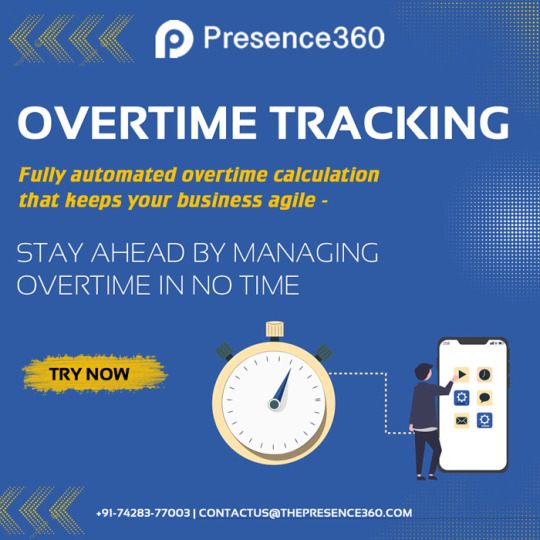
#Human Resource Management System#Face Recognition Attendance System#HR Payroll Management System#Remote Workforce Management System#Field Force Management System#Contract Workers Management System#Employee Expense Management System#Overtime Tracking and Management System#Employee Performance Management System#Employee Onboarding and off boarding System#Employee Shift Scheduling System
0 notes
Text

Digitalize HR Operations with Ecuenta Human Resource Management Systems
We at Ecuenta are aware of the difficulties involved in managing human resources. For this reason, we created the Ecuenta HRMS, which is intended to improve staff management and streamline HR procedures. Our platform's robust, intuitive UI completely changes how you manage employee data, leave scheduling, document management, and employee feedback—all of which are safely accessible from any location at any time.
#hrms#Ecuenta hrms#human resource management system#Ecuenta human resource management system#hr software#Ecuenta hr software#hr software in zambia
0 notes
Text

Digitalize HR Operations with Ecuenta Human Resource Management Systems
We at Ecuenta are aware of the difficulties involved in managing human resources. For this reason, we created the Ecuenta HRMS, which is intended to improve staff management and streamline HR procedures. Our platform's robust, intuitive UI completely changes how you manage employee data, leave scheduling, document management, and employee feedback—all of which are safely accessible from any location at any time.
#hrms#Ecuenta hrms#human resource management system#Ecuenta human resource management system#hr software#Ecuenta hr software#hr software in zambia
0 notes
Text
TrackHr brings together a host of features that help to bring everyone on a single platform, automate attendance, manage work and tasks, calculate travel allowance, manage team performance and increase productivity !
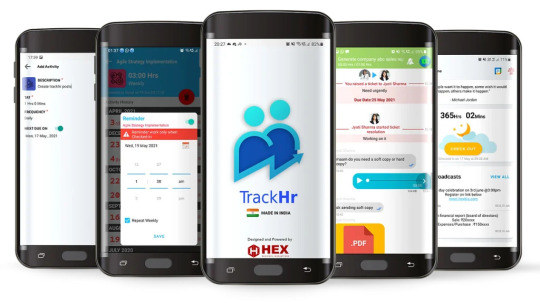
#performance management system#performance management tools#team performance management#work management software#employee attendance app#attendance tracker app#task management software#task management apps#daily task tracker#human resource management system
0 notes
Text

Seamless HR Management with ImperiumCS
Imperium Corporate Services specialises in tailoring Human Resources service to align seamlessly with your company's vision and objectives. Our expert team ensures that your Human Resource Management System is not only relevant to your operations but also reflects your organization's unique standards. From updating documents to optimizing processes, Imperium provides comprehensive HR services to support your business growth effectively.
1 note
·
View note
Text

Panoramic Infotech's HR Management System streamlines workforce operations with a user-friendly interface, offering comprehensive solutions for employee data management, recruitment, and performance tracking, ensuring efficient HR processes and enhanced organisational productivity.
0 notes
Text
HRMS Integration: Challenges and their Solutions
Unlock the potential of seamless HRMS integration with these tried-and-tested solutions. Discover how to overcome challenges and streamline your HR processes. Check out our latest blog to know more: https://www.emossy.com/hrms-intergation-challenges-and-solutions/
#HRMSIntegration#human resource management system#hrms software#hr software#hrmstool#human resources#emossy
1 note
·
View note
Text
Human Resource Management System Software for Recruitment, Performance and Leave Management Solution
HRMS software can help oversee tasks, projects, and workflows, improving productivity and reducing authoritative assignments. Payroll and HR programming can computerize different undertakings and guarantee consistency with legitimate prerequisites, saving time and lessening mistakes.
0 notes
Text
Human Resource Management System (HRMS)
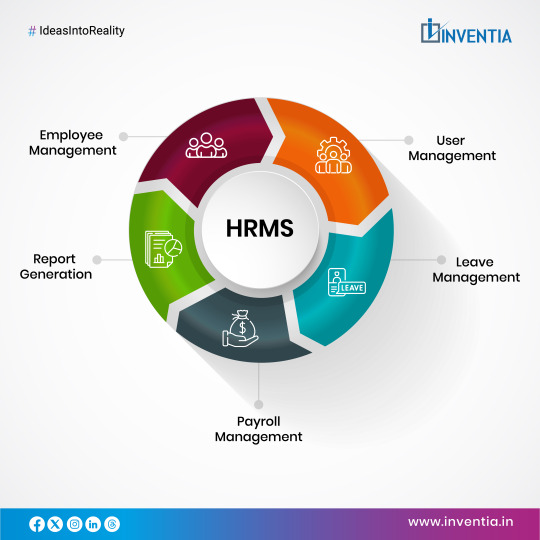
A Human Resource Management System (HRMS) is a powerful software that streamlines HR processes, including employee data management, payroll, benefits administration, time and attendance tracking, performance management, and more. Discover how an HRMS can save time, increase efficiency, and improve overall HR operations for your organization.
For more info: https://www.inventia.in/human-resource-management-system
Contact us: [email protected]
human resource management system
human resource software
hr system
hrms
0 notes
Text
What is an HRMS System & How Does It Benefit Businesses?
Introduction
Managing human resources manually is time-consuming, error-prone, and inefficient. Businesses often struggle with payroll errors, compliance risks, and scattered employee data. This is where an HRMS System (Human Resource Management System) comes into play. It helps automate HR functions, ensuring seamless workforce management, payroll processing, and compliance tracking.
An HRMS Software is designed to simplify HR operations by integrating employee records, attendance tracking, and performance monitoring into a single platform. Whether you're a startup or a large enterprise, implementing an HRMS System in India can significantly enhance efficiency and accuracy in handling HR processes.
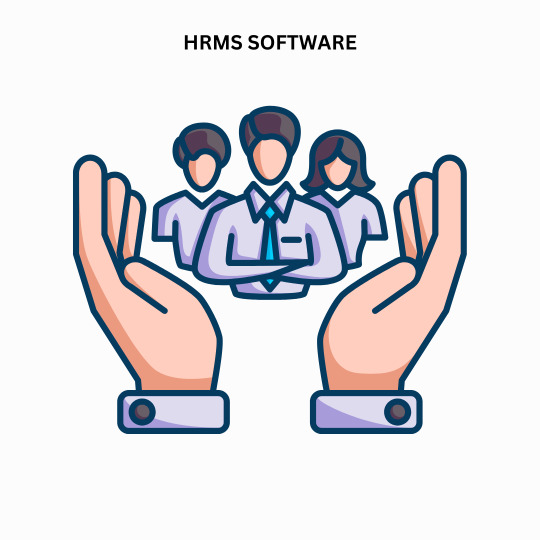
Core Functions of an HRMS System
1. Employee Management
Stores employee records in a centralized database
Automates onboarding and offboarding procedures
Tracks attendance, leaves, and shift schedules efficiently
2. Payroll Processing
Automates salary calculations, reducing payroll errors
Ensures compliance with tax regulations and deductions
Generates payslips and financial reports for transparency
3. Performance Management
Helps set employee goals and monitor progress
Simplifies performance reviews and appraisals
Identifies training and development needs for career growth
4. Compliance and Reporting
Ensures adherence to labor laws and corporate policies
Generates audit reports and maintains HR records securely
Reduces compliance risks by automating regulatory updates
Key Benefits of Implementing an HRMS System
1. Increased Efficiency and Productivity
Manual HR processes slow down operations and increase the risk of errors. An HRMS System automates repetitive tasks like attendance tracking and payroll calculations, allowing HR teams to focus on strategic initiatives. With a well-integrated HRMS Software in India, businesses can save time and reduce administrative burdens.
2. Improved Employee Experience
Employee self-service portals in an HRMS Software allow staff to check their payslips, request leaves, and update personal information without relying on HR. This enhances transparency, improves communication, and boosts employee engagement.
3. Data-Driven Decision Making
An HRMS System in India provides real-time analytics, helping HR teams identify workforce trends, predict staffing needs, and optimize recruitment strategies. With detailed reports, businesses can make informed decisions that align with their growth objectives.
4. Enhanced Compliance and Risk Management
Managing compliance manually can lead to costly penalties. A Human Resource Management System ensures timely tax filings, maintains statutory compliance, and securely stores HR records. This minimizes legal risks and ensures businesses operate within regulatory frameworks.
5. Cost Savings and Business Growth
By reducing paperwork, minimizing payroll errors, and automating HR workflows, an HRMS Software helps businesses cut operational costs. Investing in the right HRMS Software in India leads to long-term savings while fostering business expansion.
Conclusion
An HRMS System is a game-changer for businesses aiming to enhance HR efficiency, reduce errors, and ensure compliance. Whether you're looking to automate payroll, streamline employee management, or gain valuable workforce insights, an HRMS System in India can be the perfect solution.
Explore Kredily’s feature-rich Human Resource Management System to transform your HR processes and take your business to the next level.
#HRMS System#HRMS Software#free HRMS System#HRMS System in India#Human resource management system#HRMS
0 notes
Text
Empowering HR Management: Unraveling the Potential of HRMS Applications
In the contemporary business landscape, where organizational efficiency and workforce productivity are paramount, Human Resource Management Systems (HRMS) have emerged as indispensable tools for businesses of all sizes. HRMS applications revolutionize the way human resources departments operate, streamlining tasks, enhancing employee engagement, and optimizing overall organizational performance.
Understanding HRMS Applications:
HRMS applications are comprehensive software solutions designed to automate and centralize various HR functions and processes. From employee data management and payroll processing to recruitment, training, and performance evaluations, HRMS applications serve as a unified platform that empowers HR professionals to handle diverse tasks seamlessly.
Key Features and Functionalities:
Centralized Employee Database: HRMS applications maintain a centralized repository of employee information, accessible to authorized personnel. This centralized database simplifies data management, ensuring accuracy and consistency in employee records.
Efficient Payroll Processing: Automating payroll calculations and processing, HRMS applications eliminate errors associated with manual payroll systems. Timely and accurate salary disbursement enhances employee satisfaction and trust in the organization.
Streamlined Recruitment: HRMS applications facilitate the recruitment process by automating job postings, applicant tracking, resume screening, and interview scheduling. This expedites the hiring process, ensuring that organizations acquire top talent swiftly and efficiently.
Employee Self-Service Portals: HRMS applications often include self-service portals, empowering employees to access their personal information, apply for leaves, view payslips, and request training, fostering a sense of autonomy and engagement among staff.
Performance Management: These applications enable organizations to establish clear performance metrics, conduct regular evaluations, and provide feedback to employees. Performance data helps in identifying areas of improvement and recognizing high-performing individuals.
Compliance and Reporting: HRMS applications assist in ensuring legal compliance by managing employee documentation, tracking certifications, and generating reports related to workforce demographics, attendance, and turnover rates.
Choosing the Right HRMS Application:
Selecting an appropriate HRMS application is a critical decision for any organization. Key considerations include scalability, user-friendliness, integration capabilities with other software, customization options, and data security measures. A tailored HRMS solution aligns with the specific needs and goals of the organization, ensuring optimal utilization of resources and maximizing productivity.
Conclusion:
HRMS applications have become the cornerstone of modern HR management, enabling businesses to navigate the complexities of human resources with efficiency and precision. By automating mundane tasks, facilitating seamless communication, and providing valuable insights through data analytics, HRMS applications empower HR professionals to focus on strategic initiatives that drive organizational growth.
In today's competitive business landscape, investing in a robust HRMS application is not merely a choice; it's a strategic imperative. Organizations that harness the power of HRMS applications gain a significant competitive advantage, fostering a motivated workforce, ensuring compliance, and ultimately achieving sustainable success. As businesses continue to evolve, embracing HRMS technology is not just a trend; it's a transformative necessity that propels businesses toward a future of enhanced productivity and unparalleled efficiency.
0 notes
Text

#Human Resource Management System#Face Recognition Attendance System#HR Payroll Management System#Remote Workforce Management System#Field Force Management System#Contract Workers Management System#Employee Expense Management System#Overtime Tracking and Management System#Employee Performance Management System#Employee Onboarding and off boarding System#Employee Shift Scheduling System
0 notes
Text
Digitalize HR Operations with Human Resource Management Systems
Imagine a time when compliance and paperwork are not associated with Human Resources (HR). This truth is quickly becoming apparent as the HR environment significantly changes. The demands of a multigenerational workforce, automation, and remote work present special opportunities and difficulties for HR practitioners. Two of an HR department's busiest and most time-consuming activities are payroll and benefit administration. The complexity increases rapidly in proportion to the size of the organization and the differences in benefit plans, wage scales, and tax laws.
The HR department's function has changed significantly in the last few years. To deliver a flawless employee experience, HR professionals must manage operations that are becoming more and more complicated. To satisfy these demands, organizations are finding that automation is a powerful option. Workday is one such platform that is revolutionary.
What is a Human Resource Management System (HRMS)?
The HRMS is a system software that is only intended to be used in conjunction with other HR department members to collaborate on tasks and activities. As everyone knows, HR professionals have a lot more work to do every day in the present company environment, and their responsibilities are growing every day. HRMS systems help with personnel management, including hiring, onboarding, talent management, employee experience, and more. The data management, analytics, and reporting features included in HR management systems also overlap with HRIS capability.
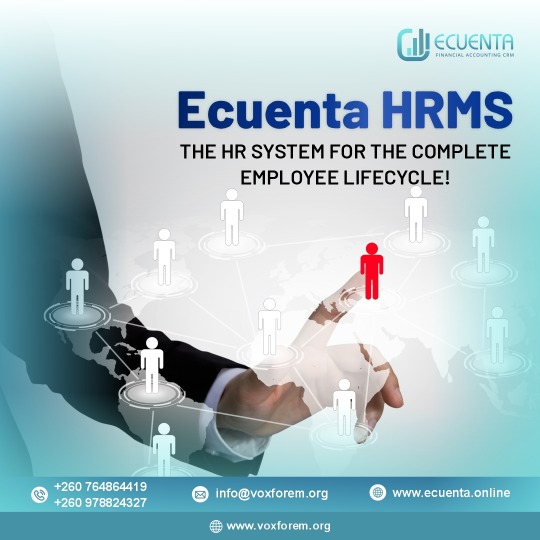
Streamlining Recruitment and On-boarding with HRMS:
Using onboarding software or a unified HR management solution will expedite your onboarding process and make it paperless and smooth. For the HR onboarding system to be adaptable and user-friendly, a new approach to onboarding is required. Faster response times for compliance and more employee engagement are two benefits of the paperless onboarding process.
The various stages of the hiring process can be completed quickly and effectively by HR experts or recruiters using automation tools. This program will be highly beneficial for handling every step of the process, from receiving applications to providing onboarding. You may be sure that the system will help you identify the right applicant for the needed employment vacancy. With customized reporting, an expert recruiting tool may add a significant amount of power to a recruiter's daily tasks and increase hiring managers' effectiveness.
Key Features of HRMS Software:
Recruitment & Hiring
Payroll management
Administrative Operations
Accessibility
Time and Attendance Management
KPI Monitoring
Project Progress Monitor
Performance Evaluation
Recruitment & Hiring:
The technology is capable of pitching the appropriate wage and optimizing a data analysis on peer positions. The HRMS's recruiting module expedites the hiring process by providing simple-to-prepare templates and recruitment follow-up. Additionally, based on predetermined criteria, candidates might be simultaneously accepted or rejected by an applicant tracking system. This speeds up the process and reduces the need to pay for placement-specific resources.
Payroll management:
Payroll administration is a multifaceted and crucial aspect of human resources that extends far beyond the mere distribution of pay stubs. Numerous payroll functions are automated by HRMS, such as earning statement computation, withholding deductions, direct deposit facilitation, and employee access to pay records (like earning statements) without requiring assistance from HR.
Administrative Operations:
Maintain comprehensive employee records, including previous work history, joining dates, and resignation letters, with ease. Efficiently manage multi-level staff information, building rental contracts, company utility bill payments, and office asset details such as computers and machinery.
Accessibility:
Even in this day and age, one of the biggest issues HR teams deal with is accessibility or mobility. Teams in HR and their employees can now work remotely. The emergence of remote working options and a hybrid work culture deserves the credit. Still, problems with mobility and accessibility arise. Teams today require a tool that can be accessed from any location and device. It shouldn't interfere with regular HR operations and people management tasks. As a result, HR professionals want a reliable HR management system. Workflow automation is not feasible otherwise. The completion of projects and the achievement of monthly goals may be delayed.
Time and Attendance Management:
Time is money, they say, and in the realm of HR, this adage rings especially true. The Time and Attendance Management feature acknowledges and records the value of every fleeting moment. This robust tool doesn't merely clock in hours; it delves into the intricacies of meticulous time tracking, balanced with efficient leave management software. Whether it's overseeing leaves, managing vacations, or ensuring timely attendance, this feature is your reliable sentinel. Should curiosity beckon about attendance patterns or occasional tardiness issues, the feature's insightful reports stand ready to illuminate, offering clarity and actionable insights.
KPI Monitoring:
For every new project, establishing key performance indicators (KPIs) is essential. Setting KPIs for the company or specific projects enables the team to make informed decisions about utilizing human resources optimally and cost-effectively. Overall, performance measurement is crucial for setting company goals and achieving business objectives.
Project Progress Monitor:
Firstly, progress monitoring, tracking, and reporting are essential collaborative processes. HRMS software can aggregate data from various sources and generate visual reports on project progress across different areas. This capability enables project managers to accurately compare current progress against the original schedule.
Performance Evaluation:
HRMS effectively streamlines the evaluation procedure by considering KPAs and KRAs. It provides more impartial and transparent data on each employee's attendance and timeliness. Knowledge management becomes successful and enhances abilities through training and development when combined with an individual productivity tracker.
Implementing HRMS in Your Organization:
The value of human resource management software, often known as HRIS or HRMS, has long been recognized by the general public. The use of HR software has numerous benefits. The application offers numerous advantages, including the capacity to automate routine company chores, optimize all business processes, efficiently monitor employee behaviors and business conduct, and furnish insights to facilitate timely decision-making inside the corporate entity. Without question, human resource management software is essential to the business's future success. Ensure you select an HRMS that aligns with your organization's requirements and budget by analyzing your needs, evaluating features and functionalities, researching vendors, and understanding the costs and potential return on investment.
Conclusion:
Ultimately, implementing HRMS software brings numerous benefits across various aspects of organizational operations. It enhances administrative efficiency, boosts employee engagement, and ensures compliance, acting as a catalyst for organizational success in the digital age. By leveraging technology to streamline HR processes, organizations can maximize efficiency, optimize resources, and drive sustainable growth in an ever-evolving business landscape.
#hrms#human resource management#human resource management system#human resource management software#human resource management software in zambia#hrms software in zambia
0 notes
Text
Digitalize HR Operations with Human Resource Management Systems
Imagine a time when compliance and paperwork are not associated with Human Resources (HR). This truth is quickly becoming apparent as the HR environment significantly changes. The demands of a multigenerational workforce, automation, and remote work present special opportunities and difficulties for HR practitioners. Two of an HR department's busiest and most time-consuming activities are payroll and benefit administration. The complexity increases rapidly in proportion to the size of the organization and the differences in benefit plans, wage scales, and tax laws.
The HR department's function has changed significantly in the last few years. To deliver a flawless employee experience, HR professionals must manage operations that are becoming more and more complicated. To satisfy these demands, organizations are finding that automation is a powerful option. Workday is one such platform that is revolutionary.
What is a Human Resource Management System (HRMS)?
The HRMS is a system software that is only intended to be used in conjunction with other HR department members to collaborate on tasks and activities. As everyone knows, HR professionals have a lot more work to do every day in the present company environment, and their responsibilities are growing every day. HRMS systems help with personnel management, including hiring, onboarding, talent management, employee experience, and more. The data management, analytics, and reporting features included in HR management systems also overlap with HRIS capability.
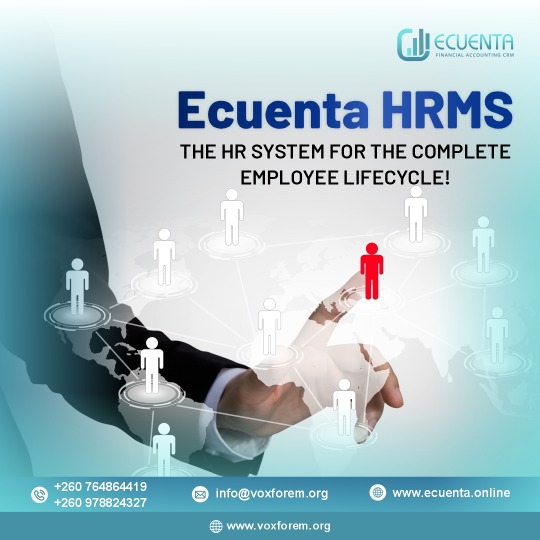
Streamlining Recruitment and On-boarding with HRMS:
Using onboarding software or a unified HR management solution will expedite your onboarding process and make it paperless and smooth. For the HR onboarding system to be adaptable and user-friendly, a new approach to onboarding is required. Faster response times for compliance and more employee engagement are two benefits of the paperless onboarding process.
The various stages of the hiring process can be completed quickly and effectively by HR experts or recruiters using automation tools. This program will be highly beneficial for handling every step of the process, from receiving applications to providing onboarding. You may be sure that the system will help you identify the right applicant for the needed employment vacancy. With customized reporting, an expert recruiting tool may add a significant amount of power to a recruiter's daily tasks and increase hiring managers' effectiveness.
Key Features of HRMS Software:
Recruitment & Hiring
Payroll management
Administrative Operations
Accessibility
Time and Attendance Management
KPI Monitoring
Project Progress Monitor
Performance Evaluation
Recruitment & Hiring:
The technology is capable of pitching the appropriate wage and optimizing a data analysis on peer positions. The HRMS's recruiting module expedites the hiring process by providing simple-to-prepare templates and recruitment follow-up. Additionally, based on predetermined criteria, candidates might be simultaneously accepted or rejected by an applicant tracking system. This speeds up the process and reduces the need to pay for placement-specific resources.
Payroll management:
Payroll administration is a multifaceted and crucial aspect of human resources that extends far beyond the mere distribution of pay stubs. Numerous payroll functions are automated by HRMS, such as earning statement computation, withholding deductions, direct deposit facilitation, and employee access to pay records (like earning statements) without requiring assistance from HR.
Administrative Operations:
Maintain comprehensive employee records, including previous work history, joining dates, and resignation letters, with ease. Efficiently manage multi-level staff information, building rental contracts, company utility bill payments, and office asset details such as computers and machinery.
Accessibility:
Even in this day and age, one of the biggest issues HR teams deal with is accessibility or mobility. Teams in HR and their employees can now work remotely. The emergence of remote working options and a hybrid work culture deserves the credit. Still, problems with mobility and accessibility arise. Teams today require a tool that can be accessed from any location and device. It shouldn't interfere with regular HR operations and people management tasks. As a result, HR professionals want a reliable HR management system. Workflow automation is not feasible otherwise. The completion of projects and the achievement of monthly goals may be delayed.
Time and Attendance Management:
Time is money, they say, and in the realm of HR, this adage rings especially true. The Time and Attendance Management feature acknowledges and records the value of every fleeting moment. This robust tool doesn't merely clock in hours; it delves into the intricacies of meticulous time tracking, balanced with efficient leave management software. Whether it's overseeing leaves, managing vacations, or ensuring timely attendance, this feature is your reliable sentinel. Should curiosity beckon about attendance patterns or occasional tardiness issues, the feature's insightful reports stand ready to illuminate, offering clarity and actionable insights.
KPI Monitoring:
For every new project, establishing key performance indicators (KPIs) is essential. Setting KPIs for the company or specific projects enables the team to make informed decisions about utilizing human resources optimally and cost-effectively. Overall, performance measurement is crucial for setting company goals and achieving business objectives.
Project Progress Monitor:
Firstly, progress monitoring, tracking, and reporting are essential collaborative processes. HRMS software can aggregate data from various sources and generate visual reports on project progress across different areas. This capability enables project managers to accurately compare current progress against the original schedule.
Performance Evaluation:
HRMS effectively streamlines the evaluation procedure by considering KPAs and KRAs. It provides more impartial and transparent data on each employee's attendance and timeliness. Knowledge management becomes successful and enhances abilities through training and development when combined with an individual productivity tracker.
Implementing HRMS in Your Organization:
The value of human resource management software, often known as HRIS or HRMS, has long been recognized by the general public. The use of HR software has numerous benefits. The application offers numerous advantages, including the capacity to automate routine company chores, optimize all business processes, efficiently monitor employee behaviors and business conduct, and furnish insights to facilitate timely decision-making inside the corporate entity. Without question, human resource management software is essential to the business's future success. Ensure you select an HRMS that aligns with your organization's requirements and budget by analyzing your needs, evaluating features and functionalities, researching vendors, and understanding the costs and potential return on investment.
Conclusion:
Ultimately, implementing HRMS software brings numerous benefits across various aspects of organizational operations. It enhances administrative efficiency, boosts employee engagement, and ensures compliance, acting as a catalyst for organizational success in the digital age. By leveraging technology to streamline HR processes, organizations can maximize efficiency, optimize resources, and drive sustainable growth in an ever-evolving business landscape.
#hrms#human resource management#human resource management system#human resource management software#human resource management software in zambia#hrms software in zambia
0 notes